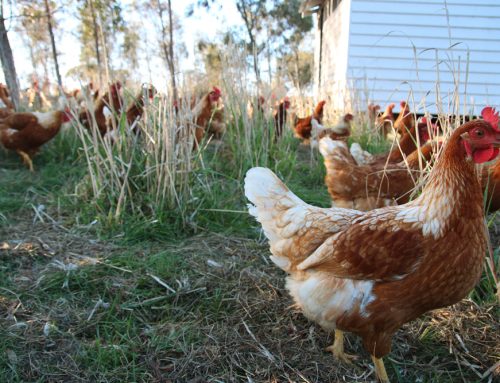by Phil Stringer,
There’s something very special that can happen when a small farming community undergoes rapid and disruptive change. You could liken it to the mad scrambling chaotic regenerative processes in play when a clearing suddenly appears in a forest and the forest begins to heal itself from the wound. Such a transition has been quietly occurring in the fertile hills and plains of the Mary Valley in southeast Queensland.
In the wake of a botched state government plan to flood the valley with a big shallow dam, the community was thrown into turmoil. Generational farming families moved away. Those that were left were spending all their spare energy fighting the dam proposal. Properties throughout the valley were left abandoned and in disrepair, and a feeling of uncertainty was palpable everywhere, in everything.
Yet from out of the quagmire of the Traveston Dam Proposal, has come a melding of the knowledge and experience and resilience that remained in this farming community, with an influx of fresh ideas and skills and enthusiasm from those who’ve come in to fill the void. Mary Valley Country Harvest Co-op was formed in late 2013 to share that knowledge amongst the growers, and at the same time to provide a local and direct outlet for producers, regardless of how large or small, new or old.
Regular farm tours are held throughout the valley covering market gardening, fruit and nut orchards, intensive pasture raised animal practices, and landcare and regenerative techniques. The third annual Summer School on ‘The Business of Small Area Farming ‘ has just been held, with presenters coming from across the country, which has once again injected a new wave of enthusiasm and energy. Ethical and chemical free methods have a high priority and a ‘Care Farmed’ grower certification is attracting more and more people to the produce.
Demand for local Mary Valley produce on the nearby Sunshine Coast and Hinterland is outstripping supply, and households, buyers co-op’s and cafe’s are on the waiting lists for the weekly deliveries of seasonal ‘mystery boxes’ and pre-orders. The Dagun Growers Market, held in the delightfully humble Dagun railway station is developing a cult following among locals wanting the freshest, cleanest seasonal produce around.
Production planning figures are being shared amongst growers to coordinate regular and consistent supply throughout the seasons, and new packing and storage facilities are being negotiated to accommodate the increasing throughput of produce. The sharing of knowledge and ideas is even spilling over to incorporate the sharing of tools and equipment which is likely to be formalised before the years end by the co-op initiating a tool hire (and eventually labour hire) program.
Another farm tour has just finished in the Mary Valley, and the last of 60 odd visitors head out the driveway. Some left, inspired to replicate the systems and management strategies on their own place. Others talked about incorporating ideas into existing farms. Three families had come up from the coast, members of a buyers co-op, keen to increase their knowledge and awareness of where their food comes from, the children having spent the afternoon feeding sweet potato to the piglets and playing in the long grass. Local radio and newspaper were involved, conducting interviews and writing stories.
Much of the afternoon was devoted to how food was being produced on farm to feed the pigs, making this a truly local product, with a minimum of machinery and fossil fuel use, and low food miles. But there was irony in the air. Three months after this grower purchased his breeders, the local abattoir closed down without warning. So on their last day, the pigs travel long distance to an inhospitable and impersonal end, and then make the long journey back again to reach the local eaters. It’s a story that’s familiar to farmers all over.
It’s a story that many in the Mary Valley are actively working to turn around. There’s a working group been formed to get a multi-species abattoir up and running in the region again. The group is in the early stages of researching and collating examples of small scale abattoirs , both operating and planned throughout Australia and around the world. Issues the group is looking into involve size and species mix, location, financing and regulations, private or cooperatively owned, and whether ongoing viability would be enhanced with the incorporation of butchering and/or composting facilities on site.
The abattoir issue is about much more than minimising food miles, distress to animals, and fossil fuel use. It touches at the heart of a fair and just way that we can grow and consume our food. It’s about giving some control back to the growers. Allowing them the options and flexibility to incorporate their needs and ethics and desires into the whole process, from beginning to end. To distinguish themselves from a bland, ‘one size fits all’ mentality, that in the end suits nobody.
There’s a recognition in the Mary Valley that you can take on big, daunting tasks and succeed. That you can stand on equal footing with government and industry and come away with a result that enhances the community, small local growers and the natural beauty of the valley itself. That working together and sharing knowledge and information is the best way to foster a vibrant and resilient local food producing community. The Mary Valley will do far more than heal itself from a wound. The people of the Mary Valley have the potential to regenerate the surrounding communities and landscape to an extent few would have thought possible just a few years ago.


